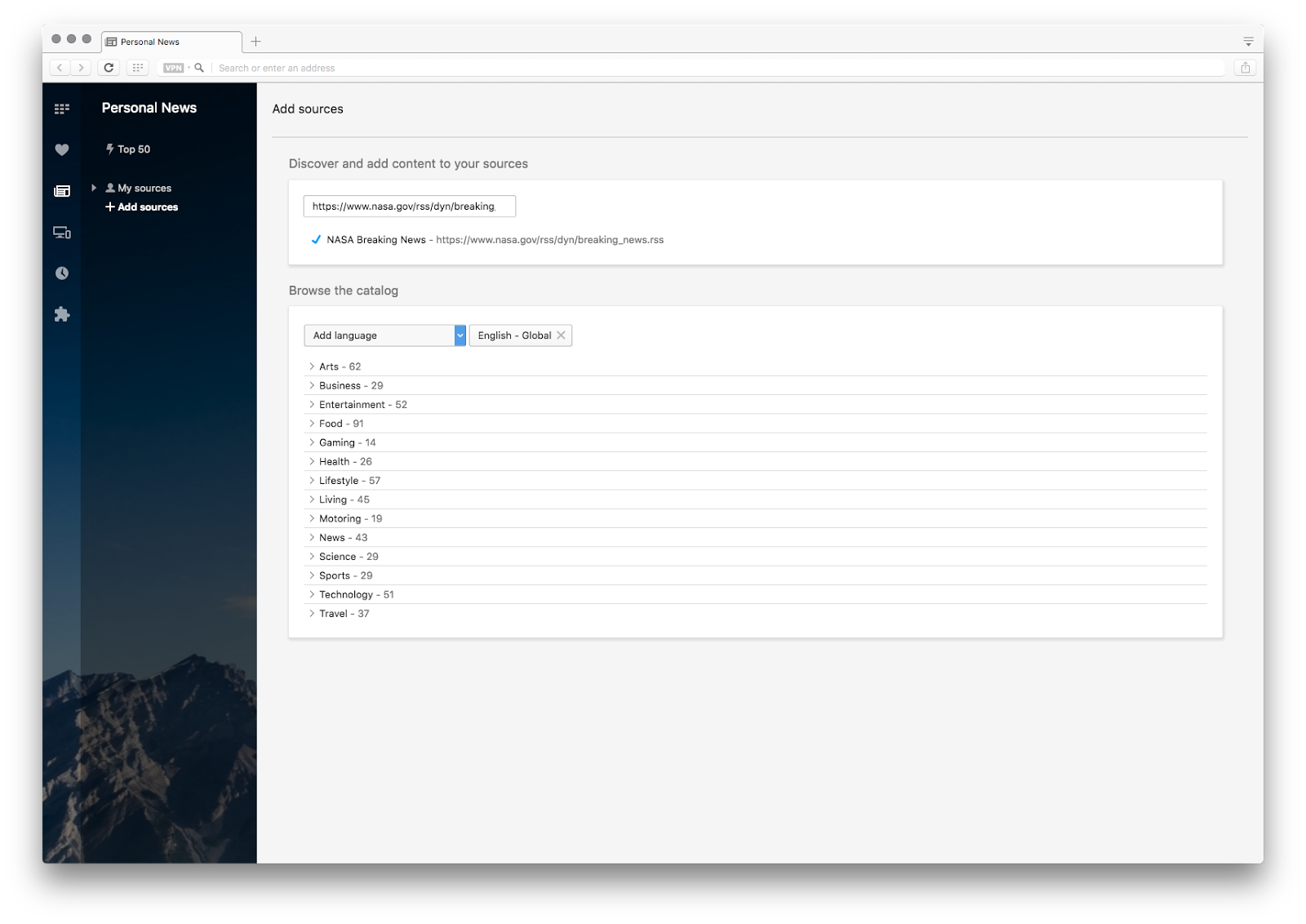
I find it likely that Chrome will want to enable people to only subscribe to the Sports section of their favorite newspaper, for example. Google’s servers currently always return the main/everything feed for the whole site even though it’s not even included on the topic pages. For example, individual topic pages here on Ctrl blog use the feed auto-discovery mechanism to point to a topic-specific feed. The current implementation restricts websites to one feed per domain. Chrome solves the multi-feed problem by letting Google’s servers decide which feed to follow based on its knowledge of the website. one per category or author, which can confuse things further. Websites also frequently publish multiple feeds, e.g. Most feed aggregators support both formats (and more to boot), so it doesn’t matter which one you pick. As Nick Bradbury put it to web authors over a decade ago: “Pick a Format (Any Format)”. These feeds represent the same updates in the newer Atom and the legacy RSS formats. Web authors and content management systems - including the ever-popular WordPress - often publish two identical syndication feeds. Brave is notably working on support for adding custom syndication feeds, but it requires manual entry of feed addresses (with all the usability issues that entail). Brave and Edge already have their own news feed systems and are unlikely to build on Chrome’s implementation. They’d have to invest in and reimplement the server-side component that makes WebFeed work. However, don’t expect any of the other browsers to introduce a feed aggregator in a future release. The client-side implementation is open-source and available to other Chromium-based web browsers such as Brave, Microsoft Edge, and Vivaldi. Chrome never actually downloads the feed locally. Chrome will also try to detect the largest icon from the page ( ) instead of using icons specified in the feed. It uses the site’s domain name as a fallback. Chrome uses this information to decide on whether to prompt the user to follow the website.Ĭhrome also receives the site’s name for use in user interfaces related to feed management from Google’s servers. This server then tells Chrome which of the feeds Google recommends and whether that feed is actively updated.

When any feeds are detected on a page, Chrome sends the feed addresses and page address to a Google server. Here’s a quick refresher if you’re unfamiliar or have forgotten it in the last decade: This article goes deeper into the technical details of how Chrome WebFeed works.Ĭhrome detects all Atom and RSS feeds on webpages using the feed auto-discovery mechanism. You should first read about the article Chrome experiment to let you Follow websites before you keep reading this one.


 0 kommentar(er)
0 kommentar(er)
